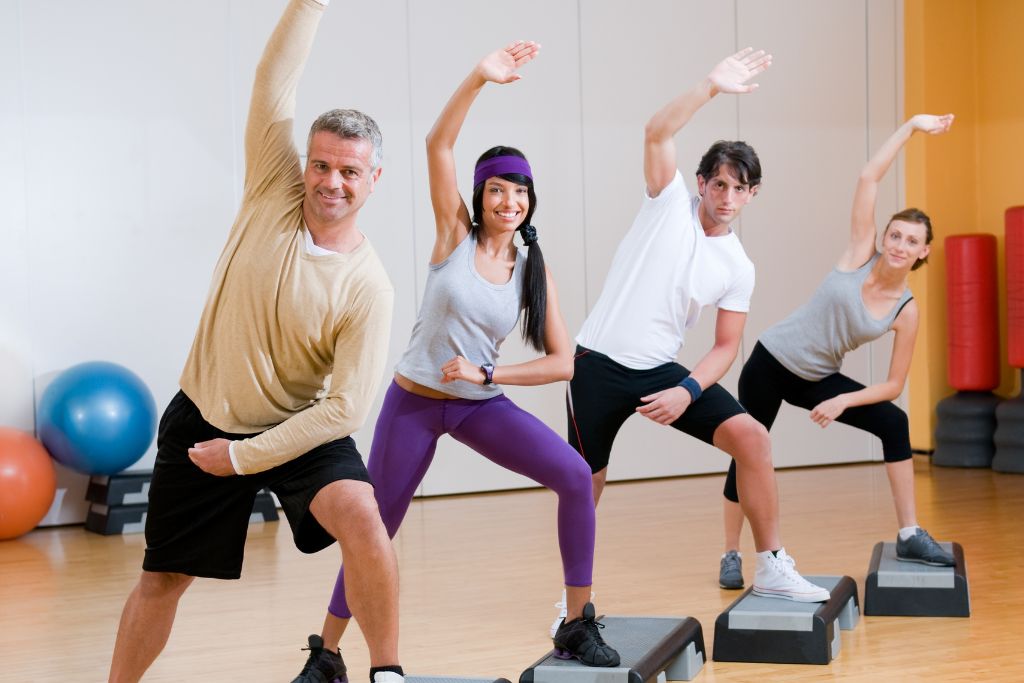Strength training exercises help build muscle that supports your joints and decreases the pain you may feel from aches or injuries. Muscle-strengthening activities can be done with free weights, weight machines or resistance bands. Low-impact aerobic exercise is another good option for joint health, swimming or cycling. At Fitness For Health, we understand that health and fitness are two separate things. That’s why we offer a variety of joint-friendly workouts to help you get the most out of your day. Whether you’re looking to stay healthy and look good while you keep your joints moving, or want to break through those limits and improve your performance overall, our exercises will do just that! It can help your heart and lungs stay strong and keep you energized throughout the day.
Strength Training
Strength training builds muscles and can help prevent or control chronic conditions such as heart disease, diabetes, arthritis, back pain, and depression. It also can increase bone density and improve mood and self-esteem.
It increases joint range of motion (ROM) to allow more movement and flexibility, which can reduce the risk of injury. It can be done with free weights, machines, or body weight, but it is important to consult a professional about the right methods for you.

You should perform strength exercises two to three times a week, with at least one day of rest between sessions. Be sure to use lighter weights for the first few workouts, and increase your resistance gradually over time.
When strength training, always warm up before and stretch after. This is to get your muscles ready for the workout and help keep them from getting too sore.
Flexibility Exercises
Flexibility exercises are a vital component of any fitness regimen, promoting overall health and wellness by improving the range of motion. It improves posture, reduces stiffness and aches, and may help prevent injury.
In addition, flexibility can also delay the onset of arthritis. Increasing flexibility can make it easier to perform everyday tasks, such as reaching over to grab something from a high cabinet or stretching while fixing the ceiling lamp.

As with any exercise program, flexibility training should be part of a broader fitness plan and can be incorporated at any age. It can also be used to increase balance and strengthen the muscles around the joints, which can decrease the likelihood of falls and injuries.
Aerobic Exercises
Aerobic exercise, also known as endurance exercise, keeps your heart and lungs working in a continuous and rhythmic manner. It includes activities such as walking, running, swimming and biking.
Regular aerobic exercise helps reduce your risk of heart disease, high blood pressure and diabetes. It also strengthens your heart muscle, which makes it more efficient at pumping blood throughout your body.

Moreover, aerobic exercise has been shown to reduce pain and fatigue and increase stamina. It also improves your immune function, helping to ward off viral illnesses and reducing the symptoms of chronic health conditions.
The American Heart Association recommends that adults get at least 30 minutes of moderate-intensity aerobic exercise five or seven days a week. It also encourages breaking aerobic workouts into small 10-minute bouts throughout the day to reap cardiovascular benefits, rather than performing a single, long session.
Weight Training
When done correctly, resistance training exercises can help strengthen the muscles and tendons around your joints, which improves their function and reduces their pain. It also helps build strength in your bones and enables you to perform day-to-day tasks like lifting, walking, squatting and climbing stairs.
Weight training is beneficial for people of all ages and fitness levels. It can help combat the natural loss of muscle mass that occurs with ageing and can even benefit people with chronic health conditions.
It can also improve your mental health. Research shows that weight-training exercise programs boost brain functioning and prevent cognitive disorders such as dementia.

However, as with any physical activity, it’s important to practice safe techniques and avoid relying on the improper form or lifting too much weight for your body. It’s also a good idea to work with a personal trainer who knows how to teach you the proper way to execute exercises for your unique body.
“Fitness For Health – Joints and More!” is an informative article that explores the importance of exercise for maintaining joint health and overall fitness. However, some people may face additional challenges due to the long-term effects of childhood abuse. “Long-Term Effects of Child Abuse” is an article that examines the potential physical and psychological consequences of childhood abuse and how they can impact a person’s health and well-being over the long term. By reading this article, readers can gain a better understanding of the complex and far-reaching effects of childhood abuse, and how these effects may require a tailored approach to fitness and health. It’s a valuable resource for anyone seeking to support individuals who have experienced childhood trauma.




